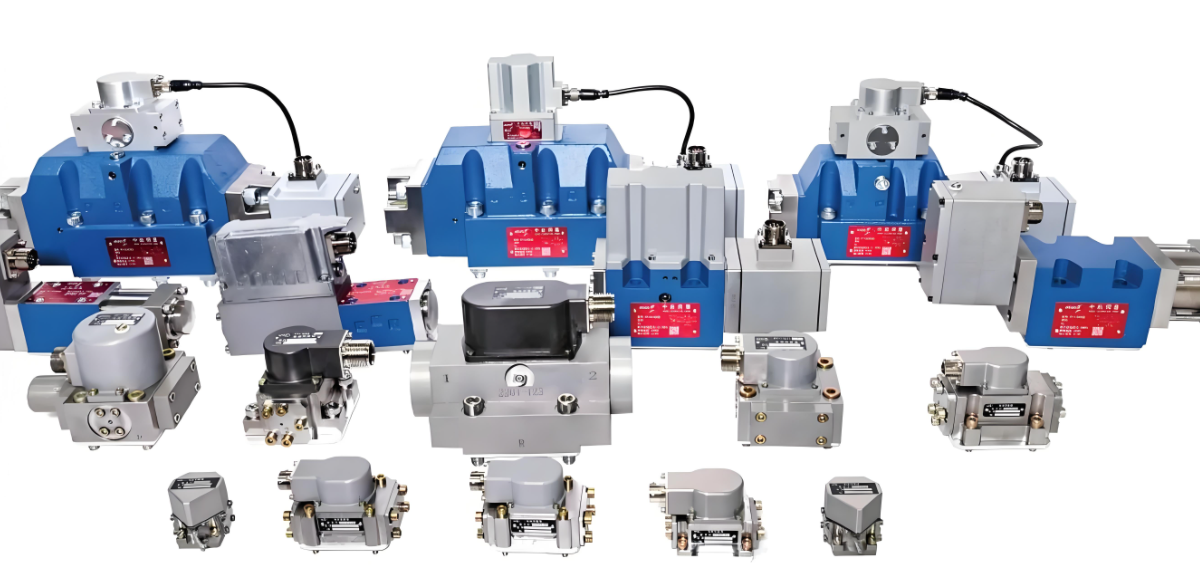Introduction
Hydraulic flow control servo valves are precision components critical to modern fluid power systems. By converting low-power electrical signals into proportional hydraulic flow and pressure outputs, these valves enable high-accuracy motion control in industries ranging from aerospace to manufacturing14. This article explores their operating principles, design innovations, and industrial relevance.
1. Fundamental Working Principles
A hydraulic flow control servo valve operates through a closed-loop feedback system:
- Input Signal: A command signal (e.g., ±10V or 4–20mA) is sent to the valve’s torque motor or linear actuator14.
- Mechanical Response: The actuator displaces the valve spool, modulating fluid flow through orifices3.
- Feedback Loop: Sensors measure output parameters (flow rate, pressure) and adjust the spool position dynamically to match the target24.
Key metrics include linearity, hysteresis, and frequency response (typically 50–500 Hz for high-performance valves)13.
2. Design Innovations
a) Dual-Loop Control Systems
Modern servo valves integrate separate control loops for flow and pressure, enhancing precision in complex applications2. For example:
- A primary loop adjusts spool position based on actuator feedback.
- A secondary loop stabilizes pressure using real-time pressure sensor data2.
b) Optimized Orifice Design
Orifice geometry directly impacts damping and response speed. Studies show that external orifice plates reduce pressure pulsations by 30–40% in cyclic hydraulic actuators3. Multi-stage orifice configurations are also used to balance high flow rates with fine resolution3.
c) Proportional-Servo Hybrid Valves
Combining proportional valve ruggedness with servo valve accuracy, hybrid models offer cost-effective solutions for mid-tier industrial automation4.
3. Technical Challenges and Solutions
- High-Frequency Noise: Amplified by rapid spool movements, mitigated via spool-notching designs and adaptive filtering algorithms23.
- Leakage Management: Zero-overlap spool configurations minimize internal leakage without sacrificing response speed14.
- Multivariable Control: Advanced valves integrate pressure-compensation modules to decouple flow and pressure variables2.
4. Future Trends
- Smart Valves: IoT-enabled servo valves with embedded diagnostics for predictive maintenance24.
- Energy Efficiency: Low-power actuators and regenerative hydraulic circuits to reduce system能耗13.
Conclusion
Hydraulic flow control servo valves remain indispensable for high-precision motion systems. Continuous advancements in dual-loop control, orifice optimization, and hybrid designs are expanding their applicability across industries. As automation demands grow, integrating intelligence and sustainability into these valves will drive the next wave of innovation234.
By leveraging breakthroughs in control theory and material science, servo valves will continue to underpin critical technologies in the Industry 4.0 era.

